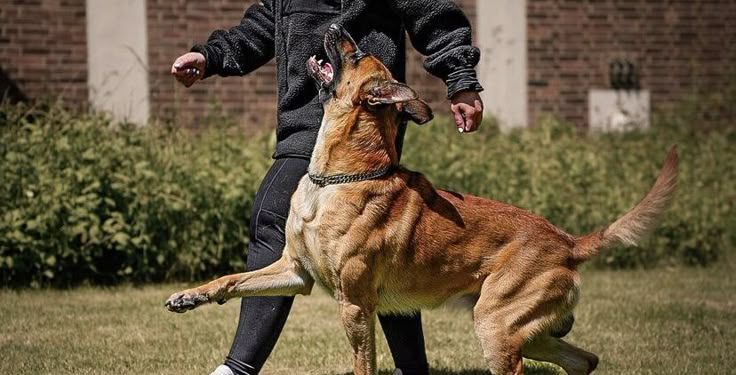Los Angeles is a vibrant city with a thriving pet culture, and as such, it boasts a vast array of dog training services. From individual trainers to large academies, the options can be overwhelming. Choosing the right dog training service is a critical decision that impacts not only your dog’s behavior but also the harmony of your household and the strength of your bond. This guide will help you navigate the choices and find the perfect fit for you and your canine companion.
1. Assess Your Dog’s Needs and Your Training Goals
Before you even start looking for trainers, take stock of what you and your dog truly need. This foundational step will narrow down your options significantly.
- Puppy or Adult Dog? Puppies require early socialization, bite inhibition, and foundational manners. Adult dogs might need obedience refreshers or targeted behavior modification.
- Specific Behavioral Issues: Are you dealing with house-training problems, leash pulling, excessive barking, jumping, separation anxiety, aggression, or fear? Different trainers specialize in different areas.
- Desired Outcomes: Do you want a well-mannered family pet, an off-leash hiking companion, a therapy dog, or help with a complex behavioral challenge?
- Your Time Commitment: How much time are you willing or able to dedicate to daily practice? This will influence whether private sessions, group classes, or board-and-train programs are suitable.
2. Understand Different Training Methodologies
The approach a trainer uses is paramount. In modern dog training services Los Angeles, there’s a strong emphasis on humane, science-based methods.
- Positive Reinforcement (Force-Free): This is the gold standard. Trainers use rewards (treats, praise, toys) to encourage desired behaviors. They focus on teaching the dog what to do rather than punishing what not to do. This builds trust and a strong bond.
- Aversive/Traditional Methods: These methods often involve corrections, fear, or intimidation (e.g., choke chains, prong collars, e-collars used for punishment, alpha rolls). While they might suppress behavior quickly, they can damage the dog-owner relationship, create fear, and lead to new behavioral problems.
- Balanced Training: This approach claims to use both positive reinforcement and corrections. However, it’s crucial to scrutinize the “correction” aspect. Ensure it’s not overly harsh or fear-inducing.
Red Flag: Be wary of trainers who promise instant fixes, rely heavily on punishment, or refuse to explain their methods clearly.
3. Explore Different Service Formats
Dog training services in Los Angeles come in various formats, each with its own advantages:
- Private In-Home Sessions: Ideal for specific behavioral issues, highly distracted dogs, or owners who prefer personalized, one-on-one attention in their dog’s natural environment.
- Group Classes: Excellent for basic obedience, puppy socialization, and dogs who need to learn to focus around distractions. They are generally more affordable and offer a social aspect.
- Board & Train Programs (Boot Camps): Your dog stays with the trainer for a period. This can be effective for intensive training or complex issues, but ensure the trainer uses humane methods and provides thorough “transfer” sessions so you can maintain the training.
- Day Training: Your dog goes to the trainer’s facility for daily sessions and returns home in the evening. This combines professional training with daily home life.
- Virtual/Online Training: Convenient for behavioral consultations, coaching, or if you’re outside the trainer’s immediate service area.
Consider your budget, schedule, and your dog’s personality when choosing a format.
4. Evaluate Trainer Qualifications and Experience
Don’t hesitate to ask about a trainer’s credentials. Professional certifications indicate a commitment to ethical practices and ongoing education.
- Certifications: Look for certifications from reputable organizations like the Certification Council for Professional Dog Trainers (CCPDT – e.g., CPDT-KA, CPDT-KSA), Karen Pryor Academy Certified Training Partners (KPA-CTP), or the International Association of Animal Behavior Consultants (IAABC – e.g., CDBC for behavior consultants).
- Experience: How long have they been training? Do they have experience with your dog’s breed or specific behavioral issue?
- References & Testimonials: Ask for client references or check online reviews (Yelp, Google, social media).
- Continuing Education: Good trainers stay updated with the latest research and techniques.
5. Consider the “Fit” and Communication Style
Even with all the right qualifications, the personal connection matters. You’ll be working closely with this person.
- Personality Match: Do you feel comfortable with the trainer? Do they communicate clearly and patiently?
- Teaching Style: Can they effectively teach you how to train your dog? A good trainer teaches both the dog and the human.
- Transparency: Are they open about their methods, fees, and what to expect?
Many trainers offer a free initial phone consultation. Use this opportunity to ask questions and gauge their approach and personality.
Conclusion
Choosing the right dog training service in Los Angeles is an investment in your relationship with your dog. By carefully assessing your needs, understanding different methodologies and service formats, evaluating trainer qualifications, and ensuring a good personal fit, you can find a professional who will guide you and your canine companion towards a happier, more harmonious life together. Do your research, ask questions, and trust your instincts to make the best choice for your family.








